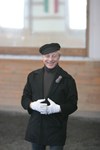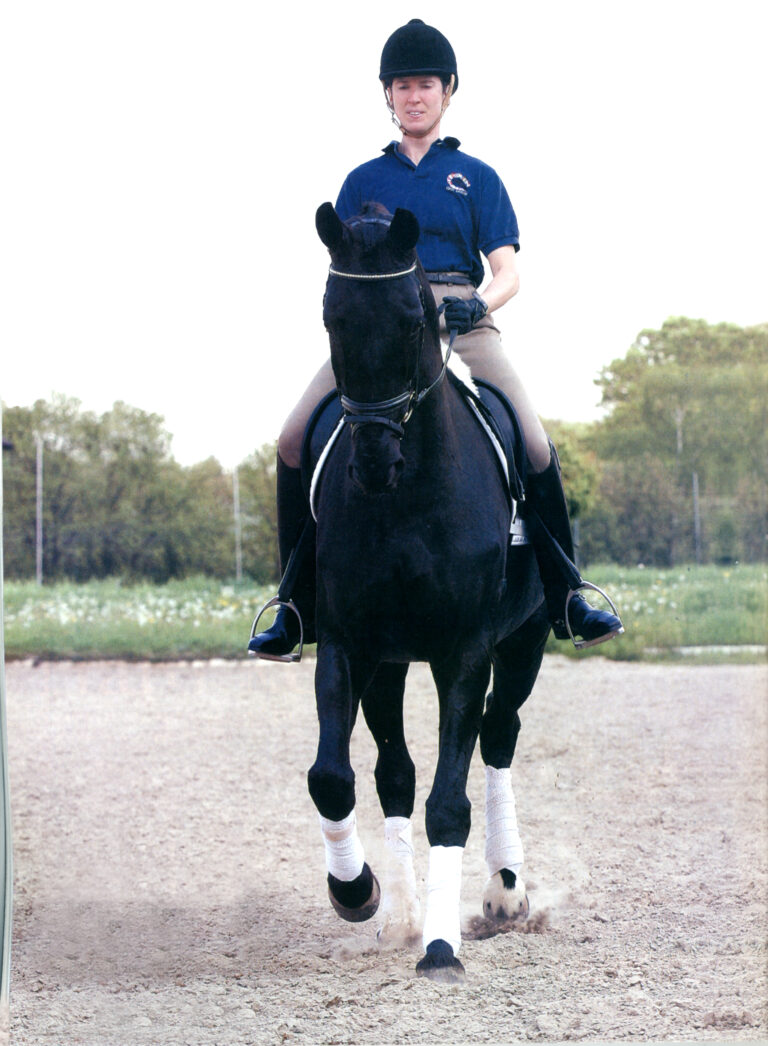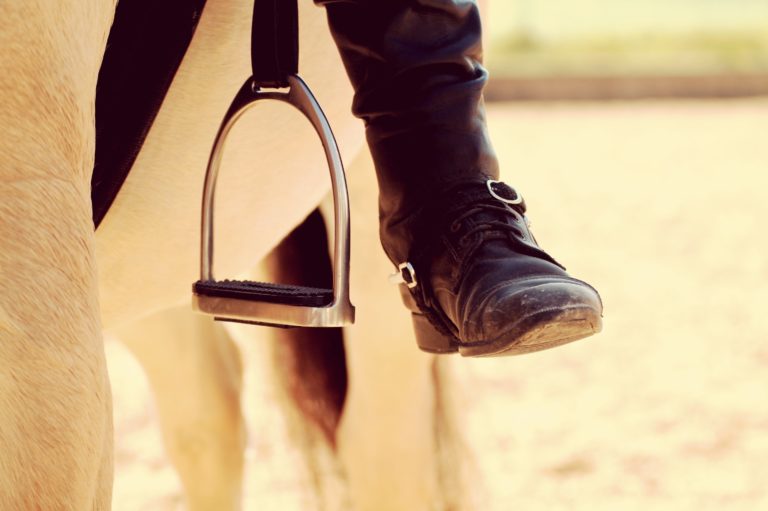Classical equitation is an art. Humans have unique attributes that take information (knowledge) and analyze it, then form syntheses and arrive at understandings, insights and the possession of wisdom. This is what enables mankind to create art. For the classical equestrian, his horse is his source of information, but without analysis, synthesis, insight, understanding and, finally, wisdom, he will never know the art of riding. Instructors are custodians of the equestrian arts. They must encourage, inspire and advise their students, but they cannot make them great riders. That remains the pupil’s job. In Part 1 of this series, I discussed the qualities of a good instructor and in Part 2 how to overcome the horse’s evasions. In this article, I want to talk about the nature of the horse and teaching students to gain his trust and cooperation.

As an Amazon Associate, Dressage Today may earn an affiliate commission when you buy through links on our site. Products links are selected by Dressage Today editors.
Consistency Leads to Trust
The word “dressage” is used precisely because of its double connotation for taming and training. One cannot train any animal without having its full attention and focus on the trainer. Taming—focusing the horse’s attention— is difficult because he is genetically determined by instinct and is programmed for multitasking. The rider’s job is to gradually replace the horse’s instinctive behavior with one of utter focus on his rider. This enormous change in the horse’s behavior— disconnecting from his instincts and focusing instead on his rider—can be earned only by a rider deserving of the horse’s total trust.
The horse wears his mind on his body. When a horse points his ears forward and stares, or braces his neck to raise his head, or lowers his head to look and smell something close to the ground, the rider has lost his attention. Without focus and attention on the rider the horse’s taming and training cease. Training is based on the desire to improve the horse’s balance and movements under the added weight of his rider. That presupposes that the rider knows what the horse needs and supplies it rather than accepts what the horse’s wants.
Teach your students that horses trust consistency of behavior and kindness much like people do. A good rider teaches the horse by showing him what he wants patiently and repeatedly. A good rider does not overreact. He controls his own emotions and impulses much like a well brought up person should. Success is born out of empathy for the horse to the point of understanding the world through his point of view. The humility that comes from understanding that there are points of views in variance with our own is a guiding virtue in equitation.
Horses should never be disciplined or punished because they lack the mental ability to interpret, analyze and understand abstractions. A punishing gesture might work among humans because they understand cause-and-effect relations. They can think in abstracts and they have the capacity to understand through analytical processes. For example, if a rider will initiate an extended trot on the diagonal, the horse might break into the canter. A rider without academic understanding might jerk the horse to a halt, backed him six steps, then kick him right and left harshly to send him forward. This kind of behavior is wrong and reveals an uninformed rider. A rider who cannot control his own temper has no business controlling a horse. Disciplining a horse does not appear in the classical tradition.
There has to be a differentiation between disciplining and correcting a horse that ignores the rider’s aids. However, if the horse were to ignore the rider’s driving and engagement aids, he needs correction. The whip is there to reinforce the leg aids by making them more apparent. Actually, the whip also has to be used correctly and judiciously. Therefore, it should be used together with the leg aid, not to imply that the whip belongs to a separate message system. Also, the periodic, well-timed and only temporary use of the spurs is there to attract the horse’s attention and augment the leg aids. These are increasing the effectiveness of legitimate aids rather than being punitive. The whip should never be used to beat a horse!
The topic of phlegmatic horses and insensitivity to the aids is large and deserves a different space. However, even those symptoms can often be blamed on the rider’s incorrect, insufficient or ignorant training methods. The short advice is: Less is more! Horses can feel a fly on their skin. Why can they not seem to feel the rider’s leg? Because often they have learned to ignore it.
Riders can aid their horses only by coordinated, integrated and comprehensive aids that are part of a total aiding system comprised of much more than merely the legs of the rider.
Here are the basic position and aids for the rider’s leg:
• The rider’s legs should remain in contact with the horse’s sides all the time but in varied positions and functions.
• The rider’s legs should be draped along the horse’s sides, back under the rider’s shoulders, elbows, hips and seat bones.
• The legs should be below the closed upper thighs and knees, which are properly turned in toward the saddle’s panels.
• The lower legs should be stretched into the proper position. The calves extend down, the ankles flex while staying supple, and the toes lift.
• The rider’s heels should be the lowest point of the extended limbs with each foot lifted and positioned parallel to the horse’s sides.
• The inside leg of the rider (around which the horse is to bend) is at the so-called “girth position” because its toe is level with the girth yet still remaining behind the knee.
The rider’s inside leg must be responsible for:
• Energizing (merely a component and not the sum of impulsion)
• Maintaining rhythm (therefore, it is pulsating in coordination with the seat)
• Suggesting the tempo (with seat modifying the length and the speed of the strides).
The outside leg is responsible for:
• Bending (around the inside leg) by preventing the haunches from falling out
• Engagement (increasing the activity in the haunches without increasing the speed)
• Closing the horse’s structure, leading eventually to “a seated horse.”
Both legs can contribute to shaping the horse’s posture and may displace his shoulders or haunches relative to the other. They also herd him sideways in space. Note that the functions of the inside leg without the appropriate corresponding affect from the outside leg can cause rushing, crookedness, butt bouncing and fishtailing. Remember that none of the legs’ functions can be carried out without the appropriate seat and rein supports.
Be Patient & Analytical to Solve Problems
Horses progress by being taught. It is a process opposite of disciplining. It is based on repeatedly showing what we want them to do and aiding, not punishing, them. This is what helps them figure out how to do what the rider wants. Horses are not proactive; they are merely reactive. The horse has no plan to disobey.
The rider must discover the reason for a mistake, and the instructor must assist him. The rider must show the horse what he wants, help him understand it and give him the skills to perform it. This means developing a plan for your student that gradually and systematically increases the horse’s strength and skills to reach the goals we want to achieve (while avoiding the monotony of drilling).
Horses are expected to startle. Startling is a life-preserving, inherited behavior that we must understand and accept. However, shying is induced by incorrect rider behavior. A shying horse perceives his rider as an enemy or attacking predator. When a horse is startled or takes flight from an imaginary danger, the rider is supposed to take flight with him, becoming a partner to the behavior. This reassures the horse of his safety. However, if the rider tenses and attacks his mouth with rein restrictions, the horse learns to fear his rider. That is why horses begin to shy. They will never understand why you want them to visit an object of imagined danger.
When a horse shies, ask your student to approach the area of the horse’s fear by driving his haunches toward it in leg yield or shoulder-in while turning his head away from it. Horses live in their haunches, not in their heads. Repeatedly ride the horse’s haunches toward the feared object or area or ride a large circle in front of it. On a circle, the horse will go away from the feared object half the time and approach it with haunches first the other half. Eventually, the shying will dissipate.
When a horse startles or shies, he becomes tense and stiff. Making him supple again starts with first calming his mind. Suppleness is a concept based on changeability, adjustability and controllability of the horse’s energies, which include his posture, his strides and his level of collection and engagement. The horse’s rhythm and tempo should also gradually become more precisely adjustable.
There is no end to the development of suppleness through changeability. The rider should pursue suppleness— adjustability and energy freely flowing through the horse—from the first day of training to the last. Anything done with a tense, stiff horse is harmful to him. A young horse’s mind may wander, and he will alternate between periods of attention to the rider’s aids or attention to the environment, but a well-trained horse will remain on the rider’s aides because he trusts them.

Charles de Kunffy is a U.S. Equestrian Federation “S” dressage judge (retired). A popular clinician around the world, he has taught judges and instructors on four continents and in the United Kingdom for 30 years. Born and raised in Hungary, he learned to ride from the classical masters at the Hungarian National Riding Academy. He carries on this tradition in his own teaching. Based in Palm Springs, California, he is the author of six books, including The Ethics and Passions of Dressage, Dressage Principles Illuminated, The Athletic Development of the Dressage Horse: Manege Patterns, and the video “The Art of Classical Dressage.” His website is charlesdekunffy.com.











